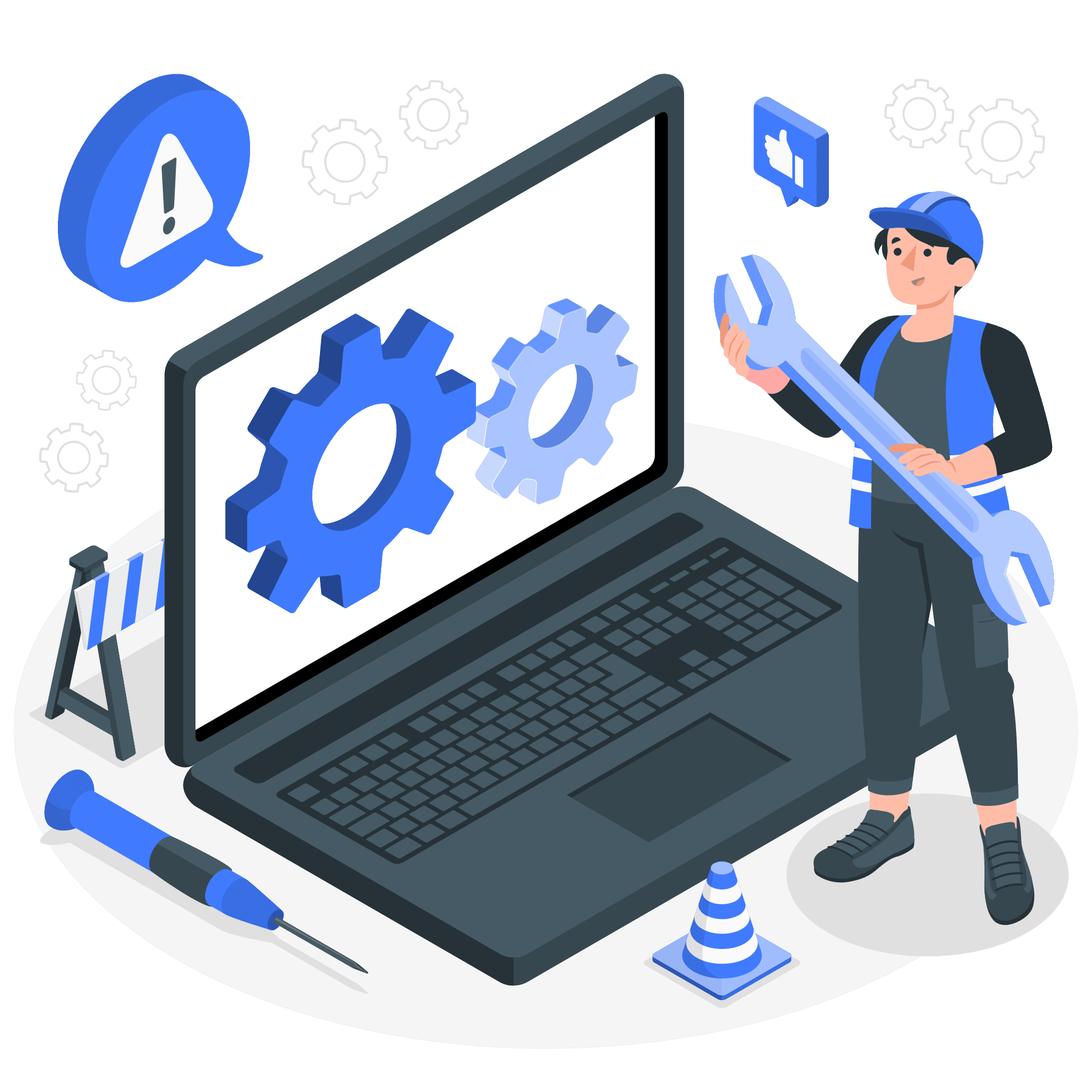1. Introduction
In digital marketing, automation is a game-changer, simplifying repetitive tasks, improving customer engagement, and enhancing lead management. Platforms like Go HighLevel enable businesses to set up complex workflows and automation, saving time and ensuring consistency in client communication. However, a common issue users face is when automation doesn’t trigger as expected, leading to missed opportunities and workflow disruptions.
This blog post explores in-depth troubleshooting automation in Go HighLevel to identify why triggers sometimes fail and how to prevent future issues. Whether you’re a business owner, a marketer, or an agency using Go HighLevel, this guide offers practical insights into troubleshooting and optimizing your automation workflows.
2. Understanding Automations in Go HighLevel
Go HighLevel is a CRM and marketing automation tool that integrates client relationship management with digital marketing, helping agencies handle client interactions, sales, and marketing campaigns seamlessly. Automations are the core feature within Go HighLevel, allowing users to build sequences of actions triggered by specific conditions. For example, automation could trigger an email response when a lead fills out a form on your website.
Automation in Go HighLevel relies on “triggers” – events that prompt action. Triggers can be anything from form submissions, user interactions, changes in lead status, or specific times of the day. However, for automation to work effectively, it’s essential to configure them correctly, ensuring all triggers and actions align with your objectives.
3. Why Go HighLevel Automation Fail to Trigger
There are several reasons why troubleshooting automation in Go HighLevel becomes necessary when they don’t activate as expected. Here are the common factors that might cause automation to fail:
3.1 Timing and Trigger Conditions
Automation workflows heavily depend on precise timing and trigger conditions. If the conditions aren’t met exactly as configured, the automation won’t activate. For instance, if a workflow is set to trigger only after a lead qualifies for a certain score, it won’t trigger until that threshold is met. Misconfigured timing conditions, such as delays or scheduling issues, can also lead to failures in triggering automation.
3.2 Integration Glitches
Go HighLevel integrates with various third-party tools like email providers, social media platforms, and CRM software. Any integration issues, such as failed API connections, can interfere with automation triggers. For example, if Go HighLevel isn’t properly connected to your email service provider, email-based automation won’t trigger correctly.
3.3 Workflow Complexity
Complex workflows with multiple conditions, actions, and steps are more prone to errors, as there are more chances for conflicts within the automation sequence. Nested actions, where one action triggers another, can cause a ripple effect if not configured precisely. As a result, workflows might not trigger as planned, or certain steps could be skipped.
4. Detailed Troubleshooting Steps for Go HighLevel Automation
Understanding why your automation isn’t triggering is the first step in troubleshooting automation in Go HighLevel. Here are actionable steps to help you identify and resolve issues:
4.1 Checking Trigger Settings
- Review Trigger Events: Go to the workflow settings and check the specific event that triggers the automation. Ensure that the trigger event, such as a form submission or lead status change, matches your intent.
- Adjust Trigger Timing: For automation based on timing, like recurring emails or scheduled messages, double-check that the date and time settings align with your goals.
- Validate Trigger Logic: If your trigger depends on specific lead attributes (e.g., score, tag), ensure that the conditions are met. Adjusting filters or conditions might be necessary to allow the trigger to activate correctly.
4.2 Testing Filters and Conditions
- Simplify Filters Temporarily: Sometimes, overly complex filters can prevent automation from triggering. Simplify your filters temporarily to see if the automation works, then add complexity back gradually.
- Use Test Leads or Dummy Data: To verify that automation works as intended, create test leads with the necessary conditions. This helps to ensure that the automation workflow activates under the intended circumstances.
- Check Condition Logic for Nested Workflows: Nested workflows or conditional branches can sometimes conflict, leading to automation failures. Review the logic in your conditional branches to ensure there’s no overlap or conflict between conditions.
4.3 Resolving Integration Problems
- Reconnect Integration Accounts: Go HighLevel connects with many third-party tools, so make sure your accounts are correctly integrated. Go to the “Integrations” tab in Go HighLevel, disconnect, and reconnect any problematic accounts to refresh the API connection.
- Check for Integration-Specific Settings: Each integration may require specific configurations. For example, if you’re using Mailgun for email, ensure the correct API keys and domain settings are in place within both platforms.
- Run Test Automation with Integrated Tools: Perform test automation with your integrated tools. This step will help verify that actions like sending emails or syncing data are working as expected.
4.4 Reviewing Workflow Actions
- Check for Action Limits: Go HighLevel has limits on certain actions, such as the number of emails sent daily. Make sure your automation workflows stay within these limits, as exceeding them could prevent workflows from triggering.
- Ensure Action Compatibility: Certain actions, like SMS or phone call triggers, may not work if your Go HighLevel account isn’t set up for them. Confirm that your account has the necessary permissions and credits to execute these actions.
- Monitor Delays and Wait Times: If your workflow includes delays or wait times, verify these settings. If a delay is too short, the automation might miss the conditions required for the next step. Adjust delays as needed to allow each step to process correctly.
5. Best Practices to Ensure Reliable Automation Triggers
To minimize the need for troubleshooting automation in Go HighLevel, implement these best practices to help keep your automation running smoothly:
5.1 Design Simple, Focused Workflows
While Go HighLevel supports complex workflows, simpler workflows are often more reliable. Design your automation with a clear purpose, and avoid unnecessary steps or nested conditions that could complicate the sequence.
5.2 Test Regularly with Dummy Data
Before deploying automation at scale, run tests with dummy data to ensure every part of the workflow works correctly. Testing also helps identify potential issues early, preventing workflow disruptions once automation goes live.
5.3 Document Workflow Logic
Maintaining documentation of your workflows is a best practice for troubleshooting. Documenting the logic behind each automation makes it easier to pinpoint issues when troubleshooting is needed.
5.4 Monitor Automation Performance
Regularly monitor automation performance in Go HighLevel to catch issues before they affect operations. Many CRM tools, including Go HighLevel, offer reporting features that help identify where workflows may be failing or not triggering.
5.5 Stay Updated with Go HighLevel Changes
Go HighLevel regularly updates its platform, adding new features or modifying existing ones. These changes can occasionally impact automation functionality. Stay updated on new Go HighLevel releases and test your workflows after updates to confirm compatibility.
5.6 Leverage Go HighLevel Support Resources
Go HighLevel has a dedicated support team and a community of users who share tips and troubleshooting advice. Utilize these resources whenever you face automation issues, as you may find solutions tailored to specific problems or learn best practices from other users.
6. Conclusion
Go HighLevel automation is essential for optimizing client management, marketing, and communication. However, understanding the common issues that can prevent automation from triggering and knowing how to troubleshoot them effectively is crucial. By following the troubleshooting steps and best practices outlined in this guide, you can maintain reliable workflows that minimize disruptions and enhance productivity.
Whether you’re resolving integration issues, adjusting trigger settings, or simplifying workflows, troubleshooting automation in Go HighLevel requires a methodical approach. Consistently monitor and test your automation, document each workflow, and leverage Go HighLevel’s support to ensure seamless operation. With these strategies, you’ll be better equipped to address automation issues and maximize the efficiency of your Go HighLevel setup.
References
- Go HighLevel Help Center
Go HighLevel’s official help center provides detailed documentation on workflows, automation setup, and troubleshooting for various features. This is a reliable resource for specific configuration settings and solutions. - Go HighLevel Community Forums
The Go HighLevel community forums are a place where users share best practices, troubleshooting tips, and workflow advice. Engaging with the community can help discover real-world solutions and learn from experienced users. - Zapier Guide to Troubleshooting Automation
Although specific to Zapier, this guide covers general automation troubleshooting tips that are applicable to Go HighLevel as well, particularly for integration issues and understanding trigger conditions. - Go HighLevel YouTube Channel
The official Go HighLevel YouTube channel provides video tutorials on setting up automation and troubleshooting common issues. These videos are often helpful for visual learners and cover various platform updates. - HubSpot’s Guide on CRM Automation
HubSpot’s blog offers in-depth articles on CRM workflow automation, with general insights that can be applied to any CRM platform, including Go HighLevel. This is useful for understanding broader automation strategies. - Contact Us


